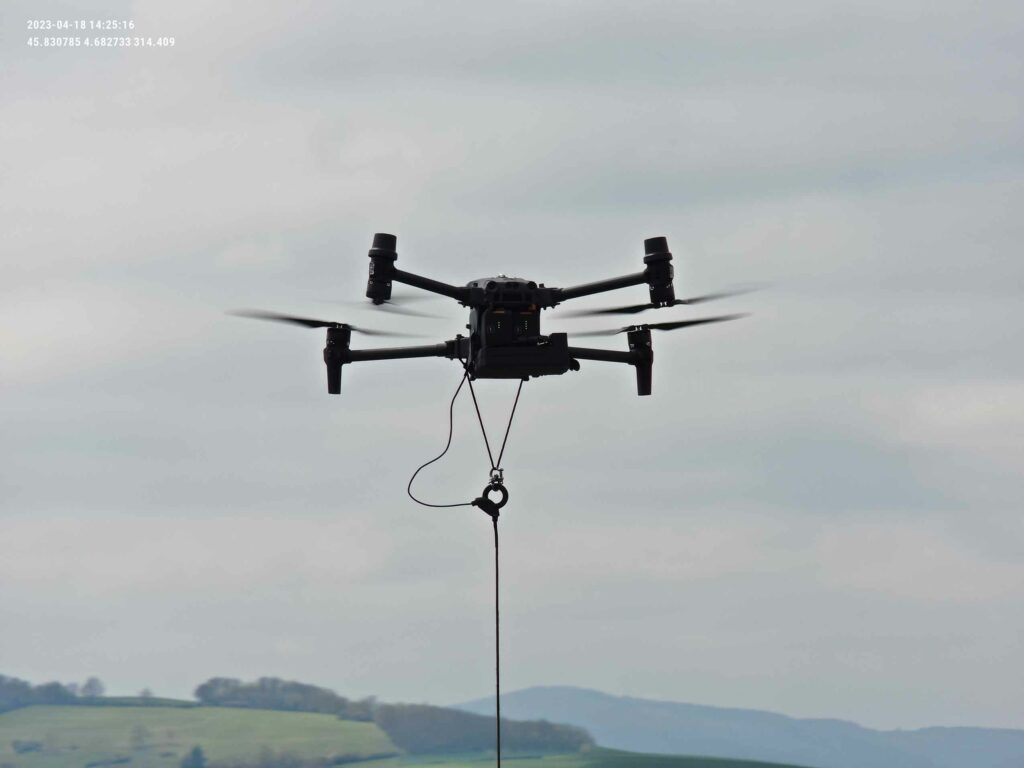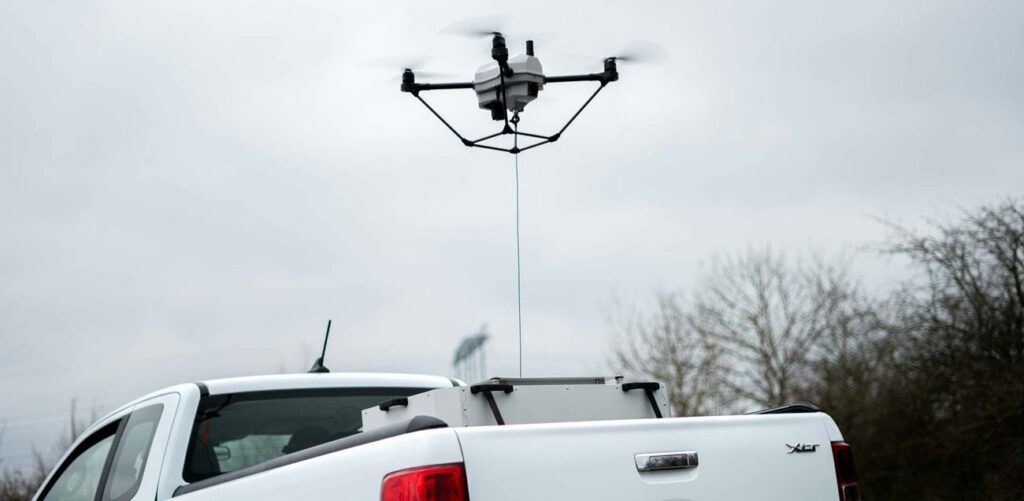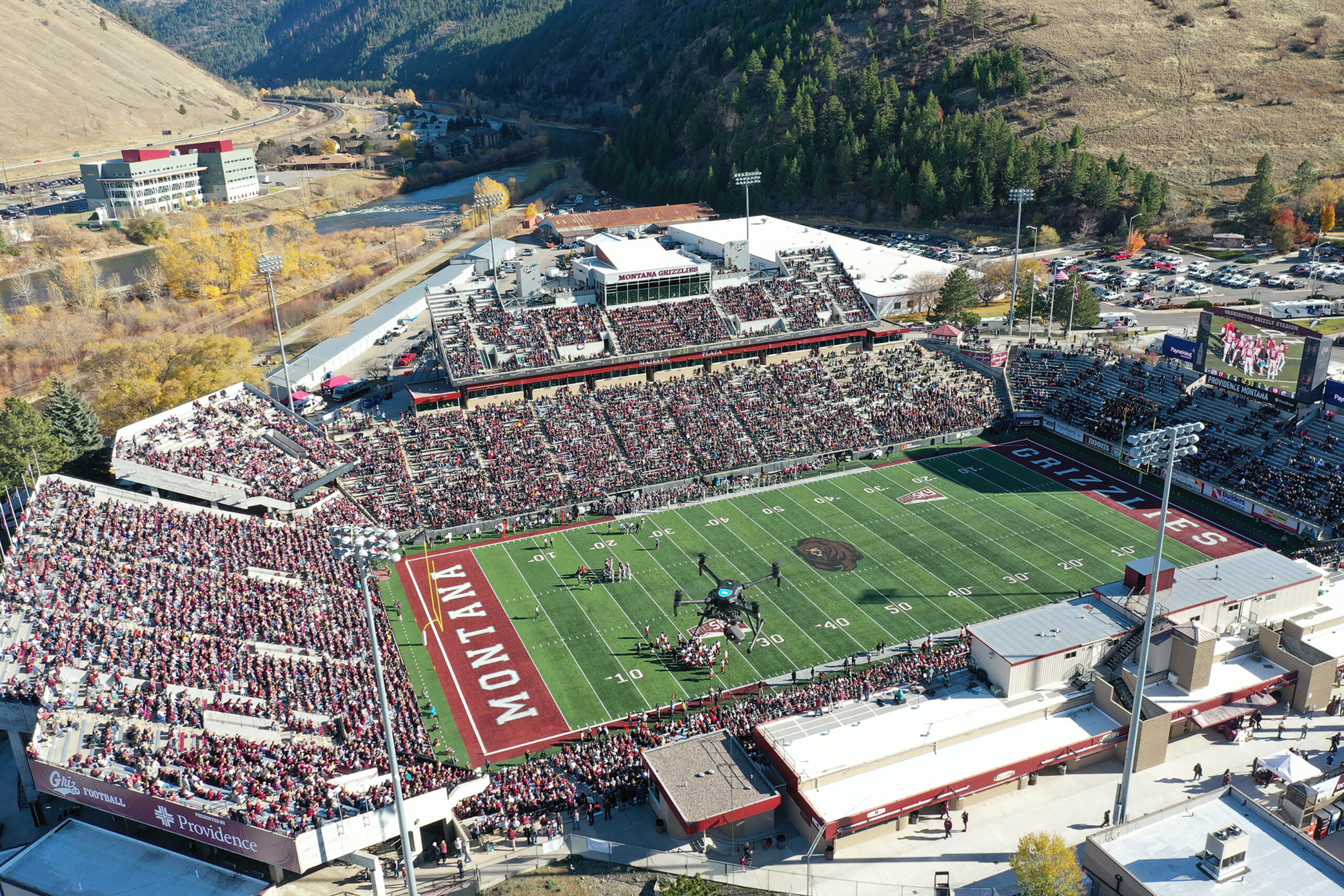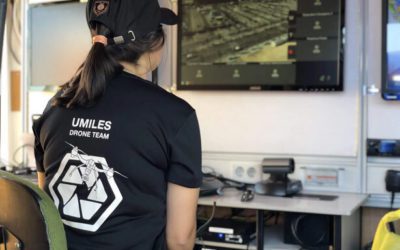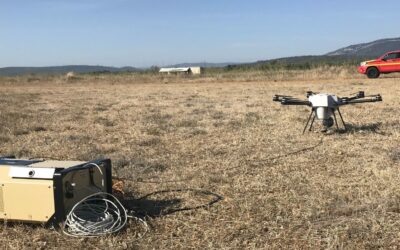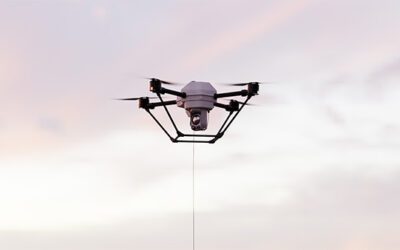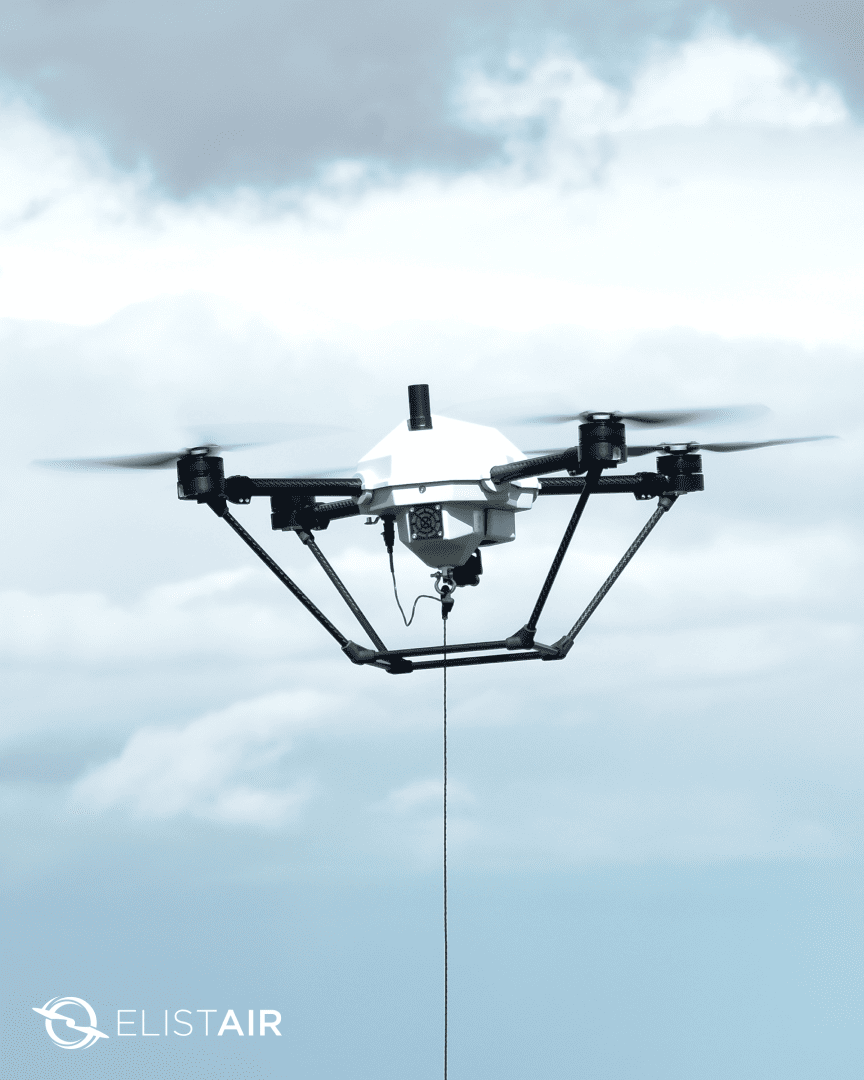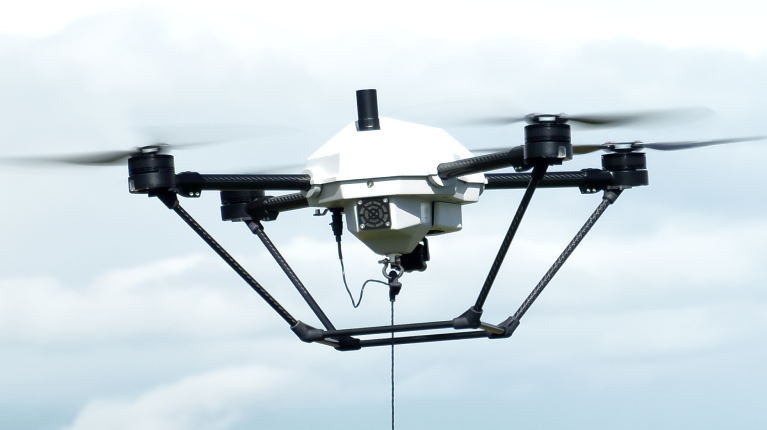Tethered Drone Systems vs. Traditional Drones: What is the Difference?
Elistair Team
12 minutes
What exactly are tethered drone systems? What is the difference between tethered drones and traditional UAVs? What are the advantages and inconvenients of each?
UAVs have become an essential tool for many industries, including law enforcement, military, and commercial applications. With advances in technology, these unmanned aerial vehicles are more and more sophisticated. They can handle longer flight times, offer improved imaging capabilities, and greater range.
Explore the world of professional drones and gain in-depth insights into their unique features and critical roles in security, safety, and defense applications.
What are the differences between tethered drone systems and traditional ones?
Tethered drones are UAVs that connect to a tether, which supplies power, data, or both from a ground power station to the drone. Tethers can range in length from a few meters to a hundred meters or more.
Whereas traditional drones, use onboard batteries for power and operators control them through a radio or wifi link.
Comparing flight endurance: tether drone vs. Traditional
In theory, tether drones have an unlimited flight time thanks to the continuous power source they receive.
In practice, component wear and environmental conditions limit their endurance. Standard aircrafts with a tether can fly for 5 to 8 hours. Reinforced aircraft designed for tethered flights can easily last over 24 hours. This makes them ideal for applications that require extended surveillance, monitoring, and data collection.
Traditional UAVs, on the other hand, have a limited flight time. Their onboard batteries typically last between 20-50 minutes. Moreover, there is additional time on the ground to swap out the batteries.
Drone range: tethered vs. traditional UAVs
Tethered drones exclusively perform captive flights. However, one can extend their limited range by leveraging powerful camera payloads with day and night zooming capabilities. Using several tether drones is another way to cover larger areas. These solutions can connect to a central video monitoring system or battle management system.
Traditional systems, on the other hand, have a greater range and can fly over long distances. Their short flight will be the main limiting factor. It reduces their perimeter of action and increases the possibility of losing the aircraft.
Tethered systems for safest communications
Tethered drone systems tend to solve data communication issues such as jamming or hacking. Indeed, they allow a direct power and data transmission by the tether which removes the need for AES 256-bit encryption.
Some models also feature a “dark-RF” mode which allows them to be completely silent regarding radio emissions. This is particularly helpful in the battlefield, where discretion is critical, and where RF jamming is frequent.
Ease of transport
Traditional UAVs can be easily transported to different locations and launched from a variety of platforms.
Tethered drone systems have a larger logistical footprint. They include the UAV, the ground station, and sometimes a power source like a generator. However, they usually fit in the back of a standard vehcile. In addition, some designers create models for integration onto mobile platforms such as ground vehicles or vessels.
Drone Piloting skills
These systems are usually push-button systems, as their flight plan is simple. Existing products differ in their automation levels, as most advanced models also called “tethered drones by design”. Some of them don’t require any piloting skills.
For example, the Elistair Khronos DroneBox has a full failsafe system. This lets the operator focus only on the surveillance mission.
Traditional aircraft on the other hand require specific training and license for basic maneuvers. This is especially true in emergencies or missions that go beyond visual line of sight.
What is the price of a tethered drone?
Tether drones are generally more expensive than traditional drones because they include the aircraft and the ground station, and reinforced components for persistence.
Ground power station prices range from €3,000 to €30,000, with an average price of around €15,000. Complete tethered drone systems cost between €20,000 and €130,000, depending on their features, not including the price of the payload.
Costs can vary between civilian and military uses. When considering the cost of a drone mission, think about the cost of human resources. Also, consider the cost of consumable items, like batteries, and the system’s total lifespan.
When chosen for the right missions, the cost per hour of using tethered drones is often lower in the long run.
Examples of tether drone applications
Tethered drone systems are becoming more popular. They are used for military purposes and also for public and private safety. Their endurance and security features make them valuable. Here are some of the key points:
Tactical communications
A tether drone can carry communication equipment. It helps set up temporary communication links. It also extends tactical networks in places where regular communication methods do not work.
FOB protection
Tethered drone systems can provide real-time surveillance of the perimeter of a Forward Operating Base (FOB). This allows for early detection of any potential threats and giving troops a clear view of any approaching enemies. You can quickly deploy and pack up this type of system to follow the FOB movements.
Border monitoring
Used to monitor areas around strategic crossing points or hard to reach areas, a tether drone cancan provide real-time surveillance of any suspicious activity and enabling authorities to respond quickly.
Traffic monitoring
Tethered UAVs can provide ongoing footage for traffic monitoring or data collection. They do not need to land to change batteries. When used with data analysis software, they are able to collect road traffic data over long periods.
Large events security
At public events like concerts, protests, or sports, tether drones help spot security threats early. They also improve team coordination on the ground. The tether is also safer when it comes to preventing fly-aways over people or in urban environments.
Industrial sites protection
Tethered UAVs can help prevent intrusions or incidents in sensitive industrial sites. They provide real-time surveillance with no time constraints. This is critical for monitoring the movement of equipment and personnel during sensitive maneuvers. They can also help coordinate safety operations and crisis mangement ensuring the security of everyone on site.
At the same time, various applications often use traditional UAVs. These include agriculture, media, entertainment, construction, land mapping, search and rescue, and inspection. Flexibility and range are important in these uses.
To summarize, tether drones and traditional drones have their own advantages and inconvenients, and both have unique applications. Tethered drone systems are great for long-term surveillance and security tasks. They are useful for border control, monitoring large events, and watching perimeters.
In comparison, traditional drones are more mobile. They have a greater range, which lets them perform missions that sensors cannot capture from far away.
Knowing the differences between these two types of drones can help you pick the best one for your needs.
FAQ on Tethered Drone Systems
1. What is a tethered drone?
A tethered drone is an unmanned aerial vehicle (UAV) connected to a ground station via a physical cable, allowing for continuous power and data transmission. This setup enhances operational capabilities and security.
2. How do tethered drones compare to traditional drones?
While traditional drones have a limited range due to battery life, tethered drones can operate for extended periods, making them more suitable for prolonged missions that require consistent power and data flow.
3. What are the main applications of tethered drone systems?
Tethered drones are commonly used in surveillance, monitoring, and data collection, particularly in environments where continuous power and reliable data transmission are essential.
4. How do tethered drone systems enhance data security?
Tethered drone systems minimize the risk of data jamming and hacking by providing a direct power and data link. This reduces the need for complex encryption methods like AES 256-bit, making them ideal for sensitive operations.
5. What is “dark-RF” mode in tethered drones?
Some tethered drone models feature a “dark-RF” mode, which allows them to operate silently with minimal radio emissions. This is particularly advantageous in military settings where stealth is crucial.
6. Where can I purchase tethered drone systems?
Elistair is one of the world leader in tethered drone systems. Visit our website to learn more about our products and don’t hesitate to contact us for more information at enquiries@elistair.com
Photo credit: Sotirios PETROPOULOS Police Directorate of Orestiada, Greece
For more information about Elistair and its products, please visit www.elistair.com and get the latest developments on Linkedin @elistair.

